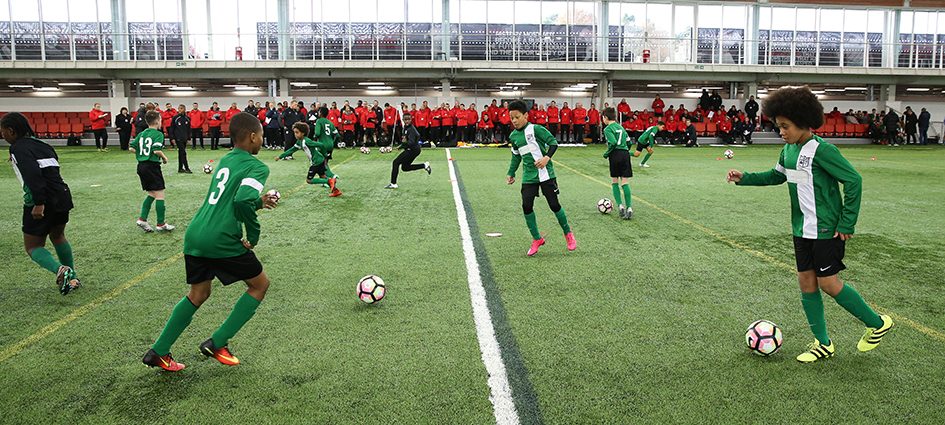
How to design realistic and relevant coaching practices
- Peter Glynn
- 11 January 2019
FA Education content editor, Peter Glynn, discusses the importance of designing practices that are relevant and realistic to the game of football.
A couple of years ago, I watched a coach of one of the older age groups at a grassroots club deliver a session on throw-ins.
After a quick jog around the pitch, the players were paired-off and organised on cones ten yards away from each other.
The player challenge was to "throw the ball to your partner’s feet, so they can control it" – an instruction intended as a remedy to numerous misplaced (and foul) throws from the weekend’s game. The receiver then had a turn at throwing it back.
The first couple of throws were dispatched with little realism and minimal enthusiasm, not helped by the fact that it was a bitterly cold winter evening.
25 minutes later the only progression to the practice was that the little enthusiasm there was had all but gone.
By this stage – and much to the coach’s visible frustration – the session had descended into who could throw the ball hardest at various parts of their partner’s body. (Bonus points, it seemed, were awarded for hitting your partner whilst they weren’t looking).
After gathering the players together to administer a lengthy telling-off, a hastily arranged crossing and finishing practice followed before a 10 minute ‘game-at-the-end’.
Soon after the game started, and eager to make the most of the little time that was left, one of the players ran to collect the ball after it went out of play.
Returning quickly to the touchline with the ball in his hands, he was told: “kick-ins in the game tonight, lads”.
The intention of the anecdote here is not to make judgement or criticise, but to highlight the challenges that come with trying to fulfil the England DNA coaching fundamentals which encourages coaches to deliver 'realistic game-related practice'.
The more experience the players get at playing the game, the more they learn to read the clues, cues and triggers in the game
No coach deliberately intends for a session to be unrelated to the game. More common, however, is the unintentional absence of many of the ingredients which combine to make the activity ‘relevant’ and ‘realistic’.
It is no easy task, particularly when you start to ponder what ‘game’ it is that you're trying to make your practice session relevant to. More often than not, this will look a bit different to the adult version on Sky Sports.
The FA Youth Award courses encourage coaches to gain a deeper understanding of the ‘trade off’ in benefits from different practice types which coaches might use with players. Where an unopposed long passing session brings certain ‘returns’ a 7v5 out of balance game offers others.
Finding the right formula in order to try and improve a certain aspect of performance (in this case throw-ins) whilst at the same time maintaining the motivation, enjoyment and behaviour of the group (and yourself, as the coach) requires a complex juggle of many considerations.
In his article 'Strictly Ballwork', published in The FA’s Insight journal in 2010, Paul Holder, former FA player development coach and now head of coaching at Brighton and Hove Albion, asked coaches to consider what experience the players get in practice sessions which closely replicate the demands, challenges and realities of the game.
“The more experience the players get at playing the game, the more they learn to read the clues, cues and triggers that constantly present themselves in the game and the more they will develop those ‘lightening quick’ assessing, predicting and adapting skills, which will help them to move at the right speed, in the right direction and arrive wherever they need to be, at the right time,” he wrote.
“Significantly, they log these experiences into their mental library and recall them as ‘instincts’. These are instinctive actions and they are a product of experience(s) and the ability to use these experiences effectively.
“The more varied the experiences, the more varied and comprehensive the ‘library’ of images and mental pictures a player builds up,” added Holder.
In light of this and returning to the start of the article - how would you have approached the issue of the ‘throw-in problem’?
This article was first published in The Boot Room magazine in August 2016.


